The Athens Metro is the primary rapid transit network of Athens, the capital of Greece. First launched in year 2000, the system gave the congested city a much needed public transit backbone.
But what most wouldn’t realise is that the Athens Metro actually began in the 19th century – Line 1 first opened on 27 February 1869 as the Athens-Piraeus Railway (subsequently renamed the Athens-Piraeus Electric Railway) between Piraeus and Thiseio, and on 4 February 1885 as the Lavrion Square – Strofylio Railway between Lavrion Square in Athens and Strofylio. Both lines were merged and reopened in 1949, and was then progressively upgraded to a modern rapid transit standard.
Much as it’s original name suggests, the Athens-Piraeus Electric Railway originally functioned to connect Athens to the Port of Piraeus, Athens’ (very) long-time access to the sea. I first read about Line 1 years ago, and I had been hoping for the opportunity to explore one more Metro line that was originally a mainline railway line. I got that chance during my winter 2022 visit to the city when I took a ride on the original Electric Railway portion of line 1 from Omonia to Piraeus.
Omonia Metro Station
I started my journey at Omonia (Ομόνοια), first opened in 1895 and one of the original batches of the Athens – Piraeus Railway stations that opened between 1869 and 1895. The current station structure seen today isn’t the original, but was a rebuild and relocation done in 1930. The station is named after the Omonia Square (Πλατεία Ομονοίας) located directly above it on the surface.
The Omonia station complex was expanded in 2000 to incorporate an interchange with the newly built Athens Metro Line 2. This was how I connected to Line 1, and crossing over from the modern Line 2 portion of the station was a bit like going through a time warp. The 1930s Line 1 platforms featured a design straight out of the, well, 1930s and featured a slightly curved plaster station ceiling supported by multiple pillars. The rest of the surfaces were decked out in orange tiles that gave the station a very retro aesthetic in present day. This honestly reminded me of a few Berlin U-Bahn stations, particularly the U8 platform at Alexanderplatz albeit with a different colour scheme.
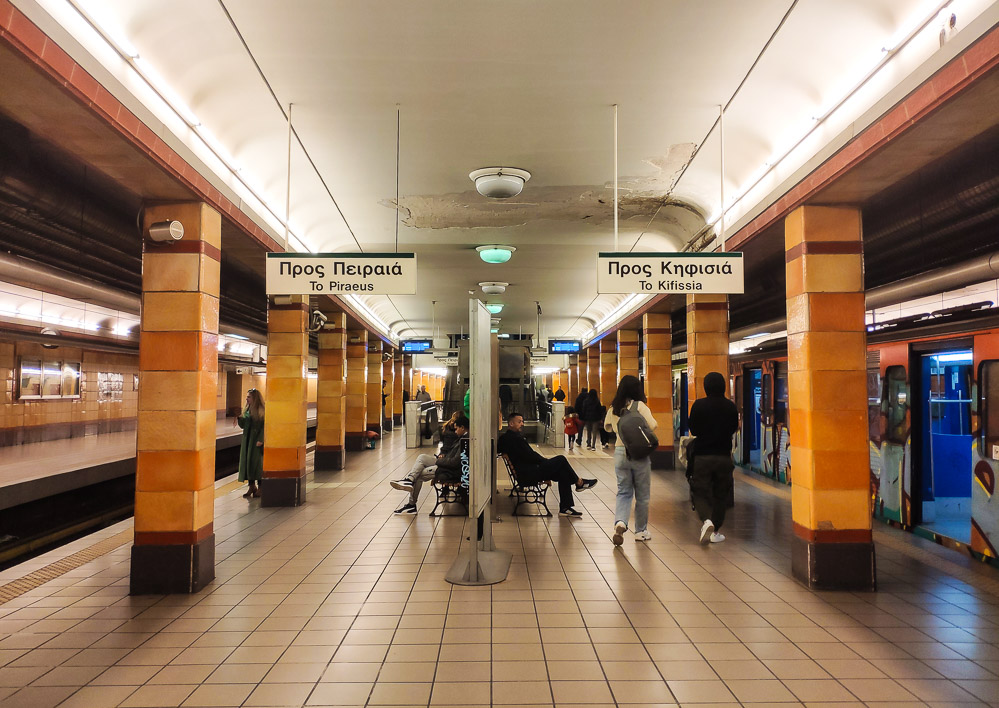
The platforms also still featured vintage tiled signage that contained the transliteration of the Greek name of the station in the Roman alphabet. I thought this was pretty cool to see.
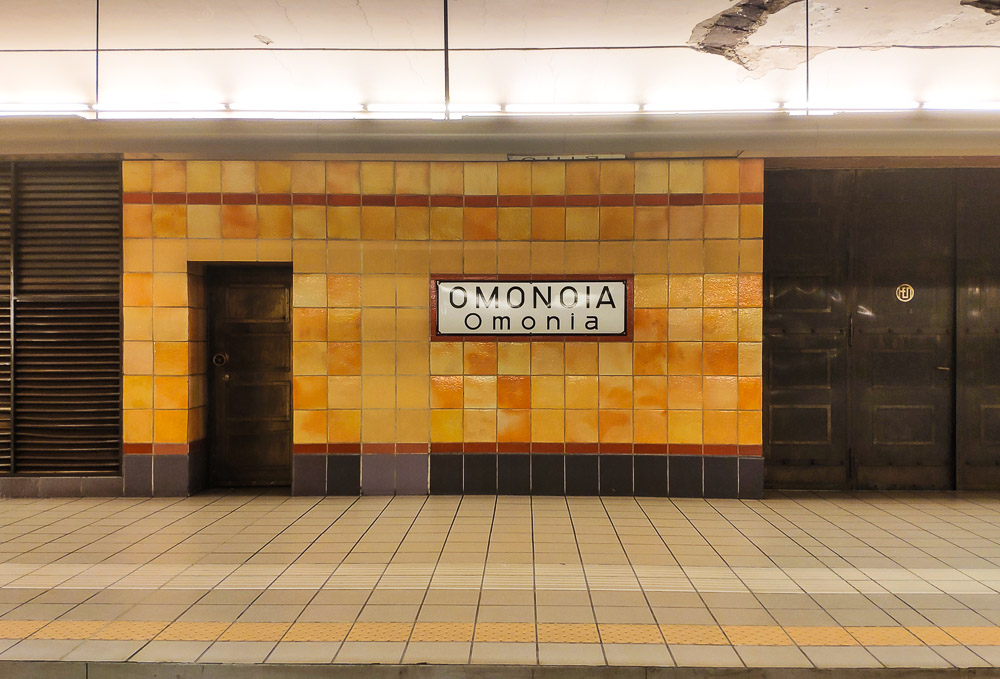
It was the late afternoon on New Year’s day, and Line 1 appeared to be running at lower frequencies with 12 minutes interval between trains. I had a 6 minute wait before a heavily graffitied train came rumbling into the station. This was already a big hint that Line 1 wasn’t like the other 2 lines.
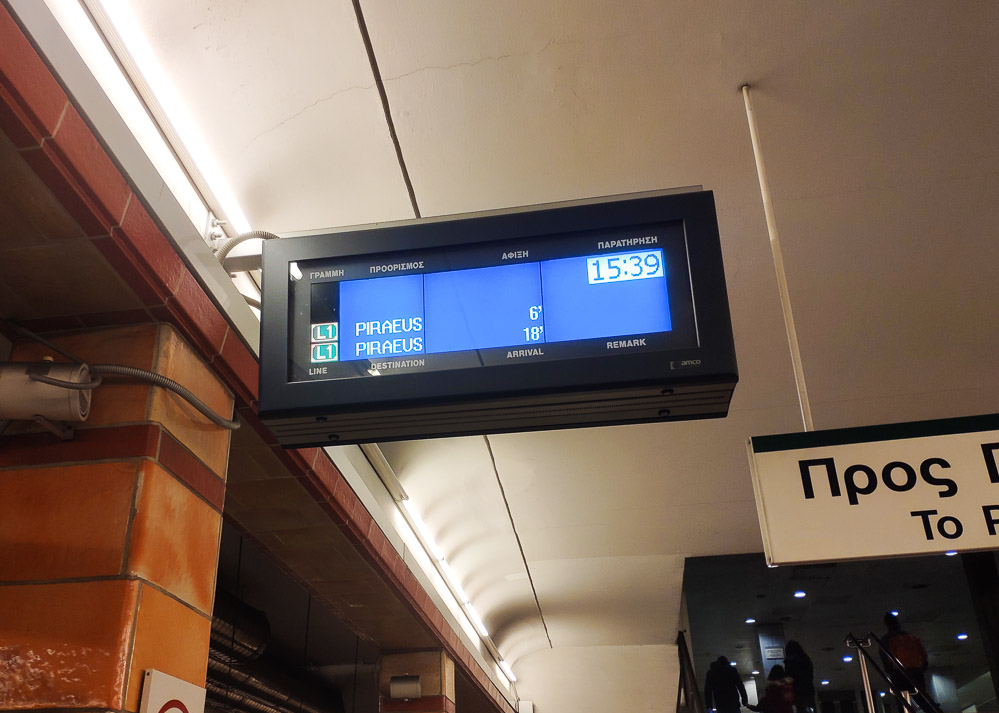
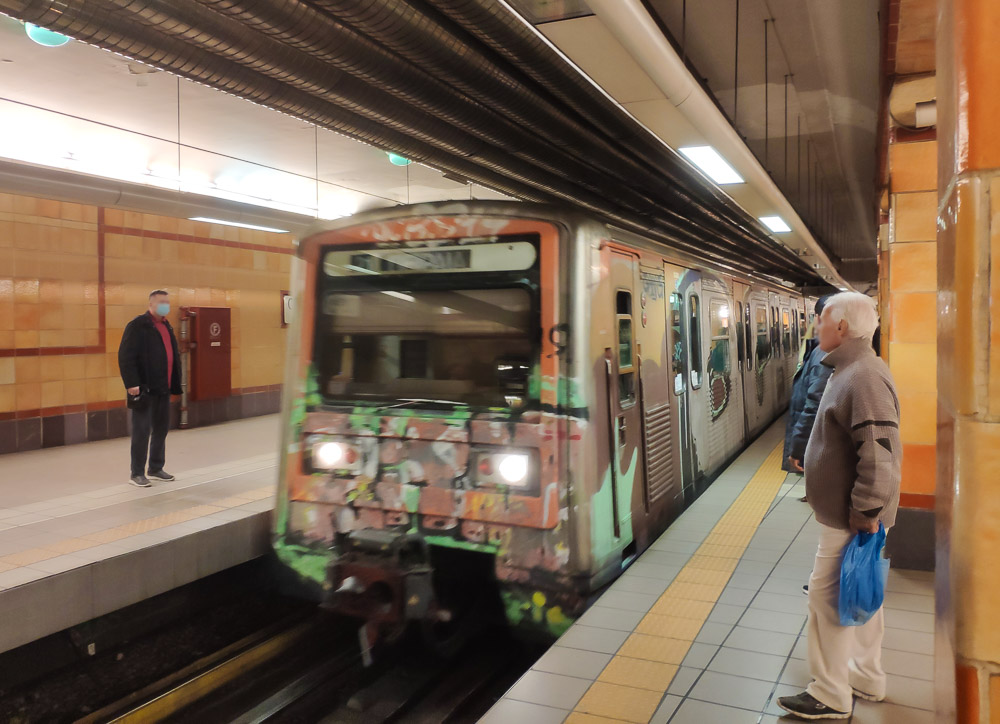
Line 1 to Piraeus (Πειραιάς)
Line 1 runs between Kifissia (Κηφισιά) in the north to Piraeus (Πειραιάς) in the southwest. The tracks run at-grade from Kifissia and goes underground just after Attiki (Αττική), and emerges back onto an at-grade alignment in a trench next to the Ancient Agora, just after Monastiraki (Μοναστηράκι).
There are 7 stations between Omonia and Piraeus and the at-grade section from Monastiraki to Piraeus allowed an appreciation of Athens’ urban growth since the line first opened. Streets ran right next to the tracks, and tenement blocks were built right across from the tracks. In a sense, the city grew around the Electric Railway.
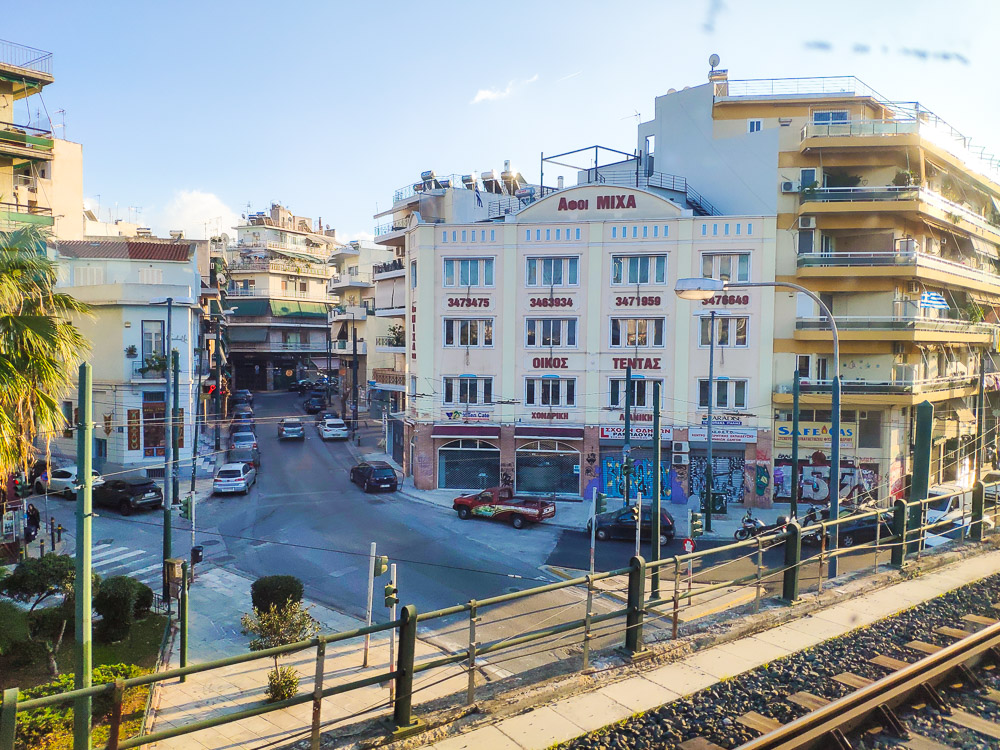
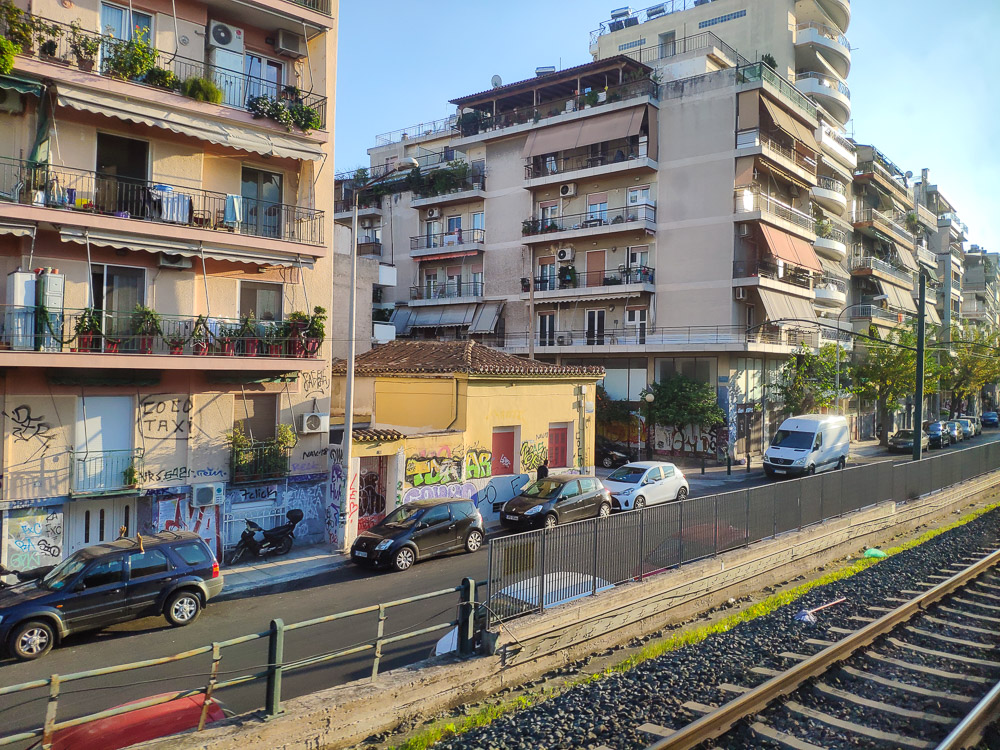
The stations were also located at-grade, and depending on the layout of the respective stations, either had platforms at street level, or the station entrance themselves opened directly onto the street, with a short escalator ride down into an open air semi-underground platform. Interestingly, some stations did away with common concourses and placed the ticket barriers directly on the platforms themselves – changing directions means tapping out and crossing over to the next platform, but no extra charges are incurred owing to the timed nature of Athens’ public transit tickets.
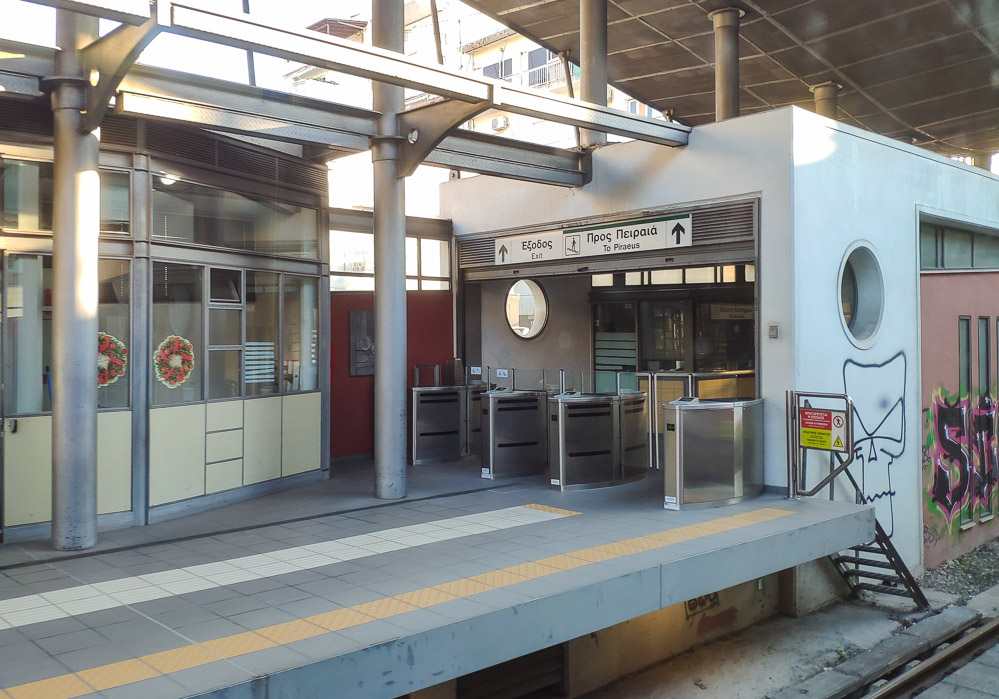
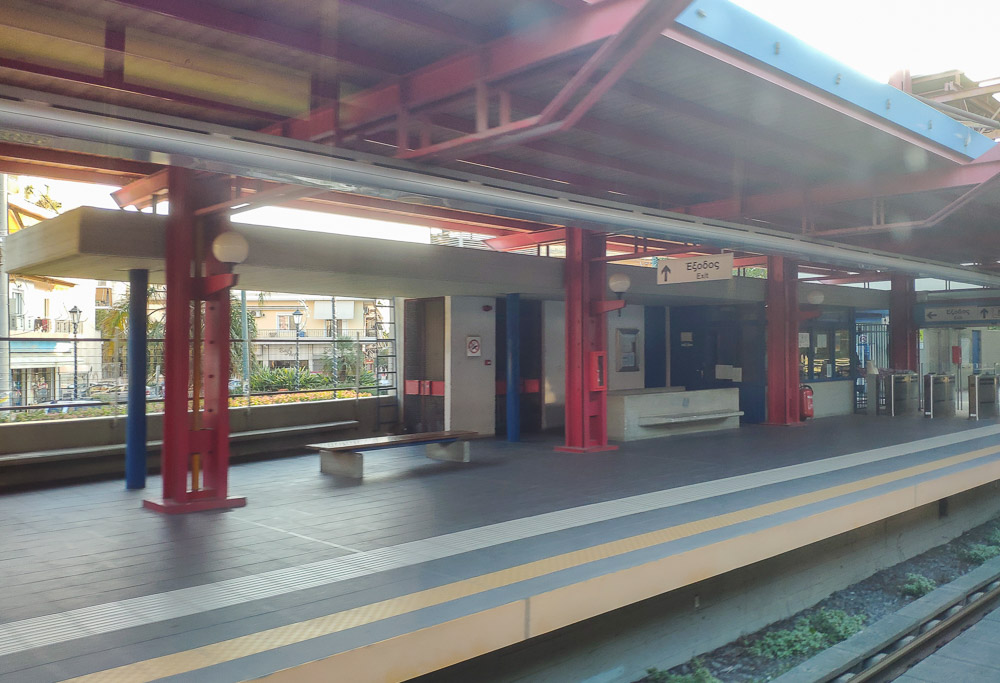
I must say that all this reminded me of the Ampang-Sri Petaling line in Kuala Lumpur, which coincidentally is another metro line built out of a former mainline rail corridor. The difference is that the Athens-Piraeus Electric Railway seems to have ran separately from the Greek mainline network proper, and was always its own separate system.
Arrival at Piraeus Line 1 Metro station
Our train rumbled into the 95 year old Piraeus Line 1 station after around 16 minutes of travel. I took advantage of the rapidly emptying train to grab a picture of the interior of the Line 1 train.
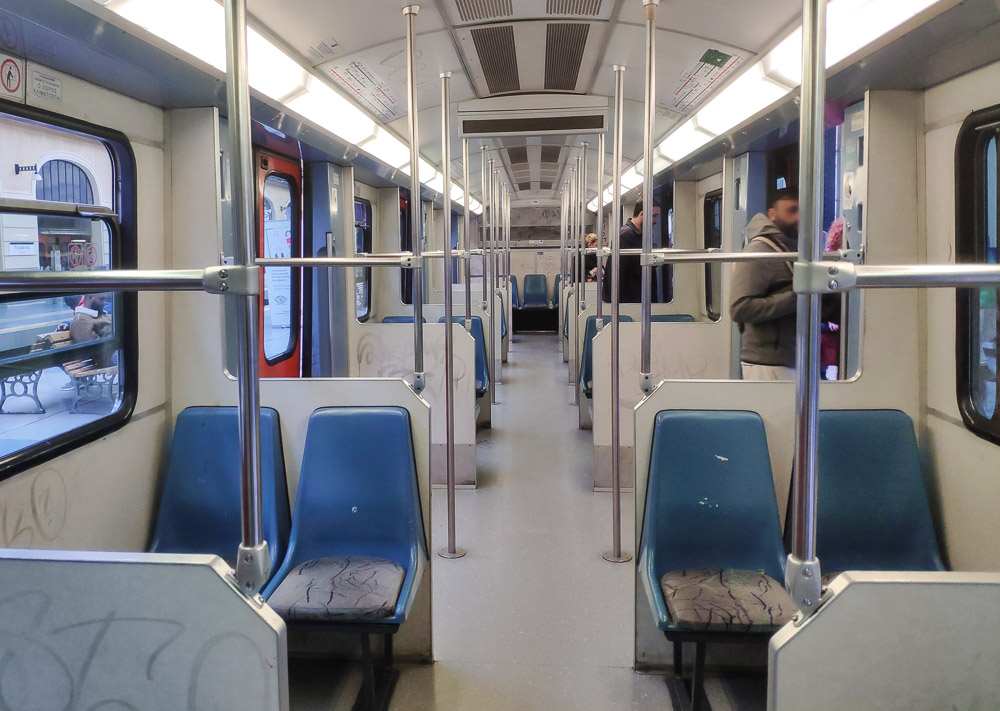
Piraeus station is an architectural icon, with its high roof and sunlight streaming into skylights built into the roof. This kept the station well-lit, although the effect wasn’t so pronounced when I was there as it was already dusk. The station is also an interchange between Line 1 and Line 3, with the underground Line 3 platforms having opened on 10 October 2022.
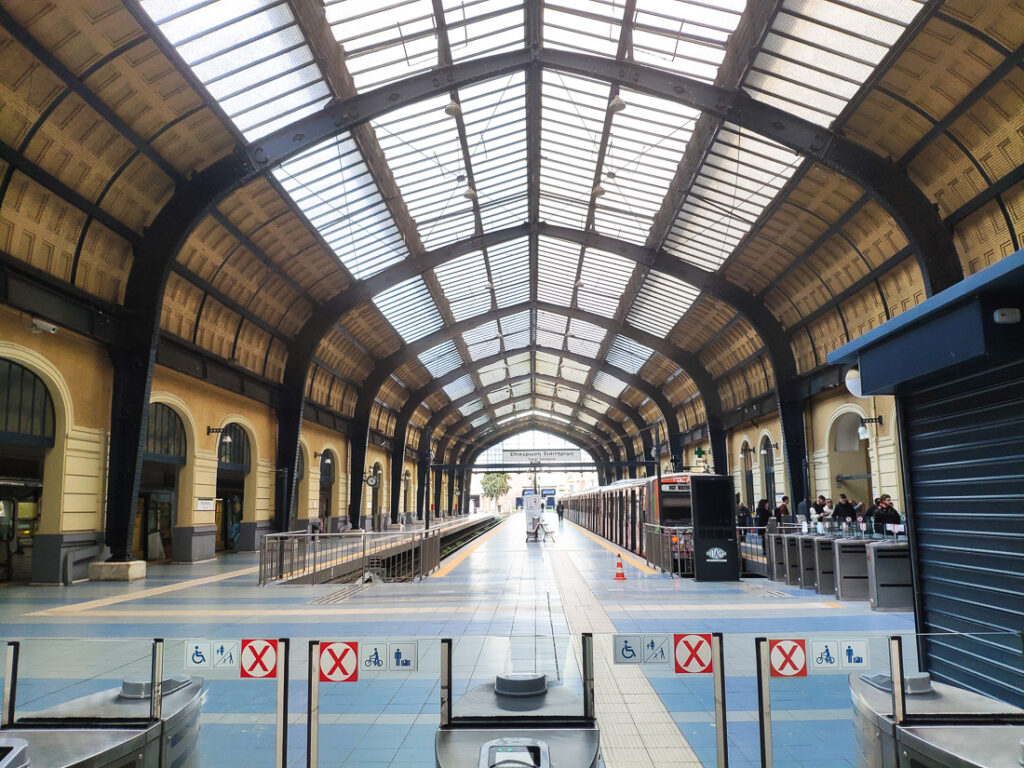
The platforms at Piraeus are a mix of a single island platform and 2 side platforms utilising the Spanish Solution – arriving trains unload their passengers on the side platforms before opening their doors to the island platforms for departing passengers. This allows separation between both groups of passengers, but the arrangement falls a bit flat with the way the ticket barriers are arranged in the station – There are 3 sets of ticket barriers with 1 dedicated for arriving passengers and another for departing passengers. The southern side platform is dedicated 3 bi-directional ticket barriers located at the end of the platform, whereas the other 2 sets of ticket barriers are shared between the northern side platform and the island platform.
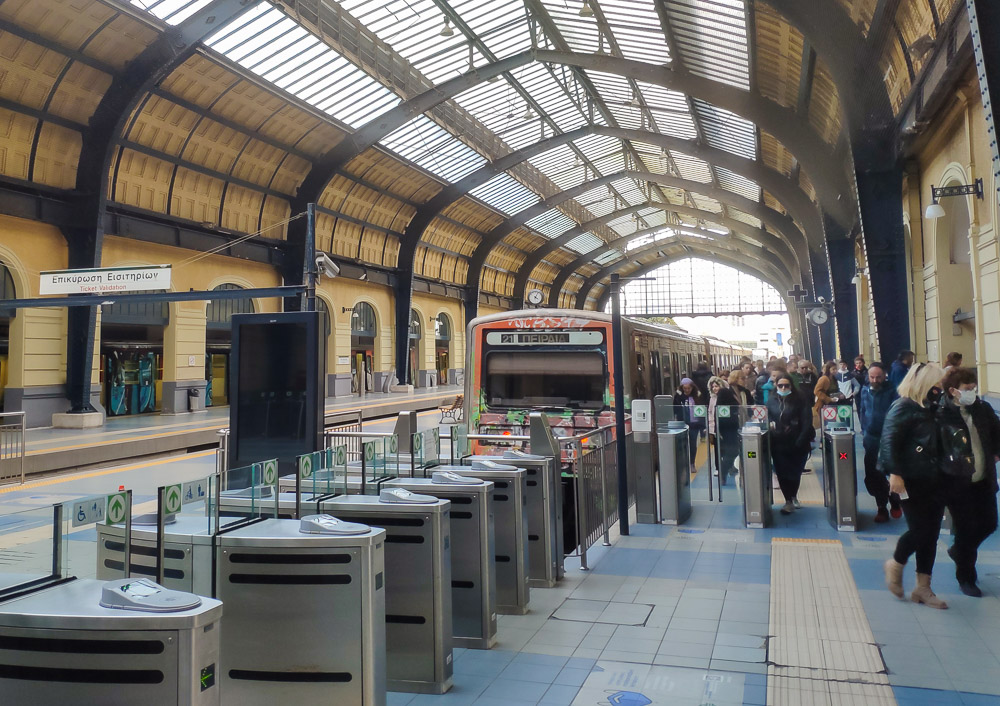
This arrangement ends up causing a long queue for the bi-directional ticket barriers, whenever a train uses the southern side platform. To make matters worse, the sole set of entry-only ticket barriers are located directly across from the southern side platform’s bi-directional ticket barriers, causing a conflict between the passenger flows of both ticket barriers,
Of course, there is absolutely nothing stopping you from waiting for the doors to the island platform to open. This is because the northern side platform and the island platform share a separate set of 7 exit-only ticket barriers leading to the front entrance of the station. These barriers also feature 4 sets of wider gates for wheelchair users and passengers with luggage.
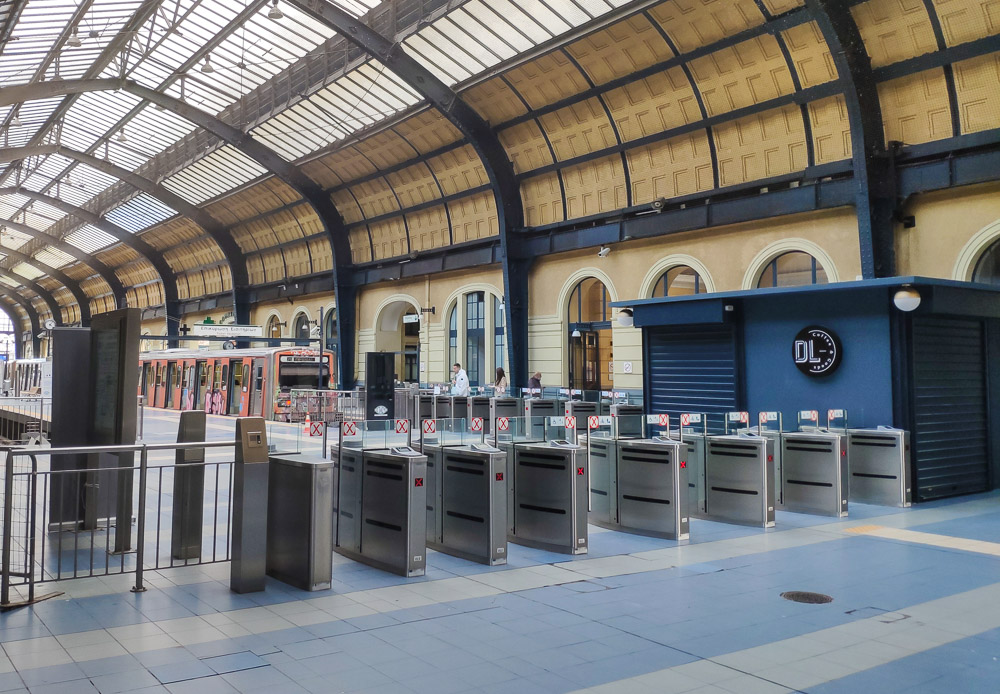
Piraeus station is built facing the main thoroughfare Akti Poseidonos (Ακτή Ποσειδώνος), and directly across from main harbour of the Port of Piraeus. Walking out the station through the “front door” would leads me to a bus stop and a walking connection to the Piraeus railway station (more on that below). This wasn’t where I wanted to go yet, so I walked out the side exit on the south side of the station instead, to a small plaza connected to a pedestrian bridge over Akti Poseidonos as well as hosting the entrance to the underground Line 3 station. The pedestrian bridge was unfortunately not well kept, as the attached escalators had broken down and there was scattered litter here and there.
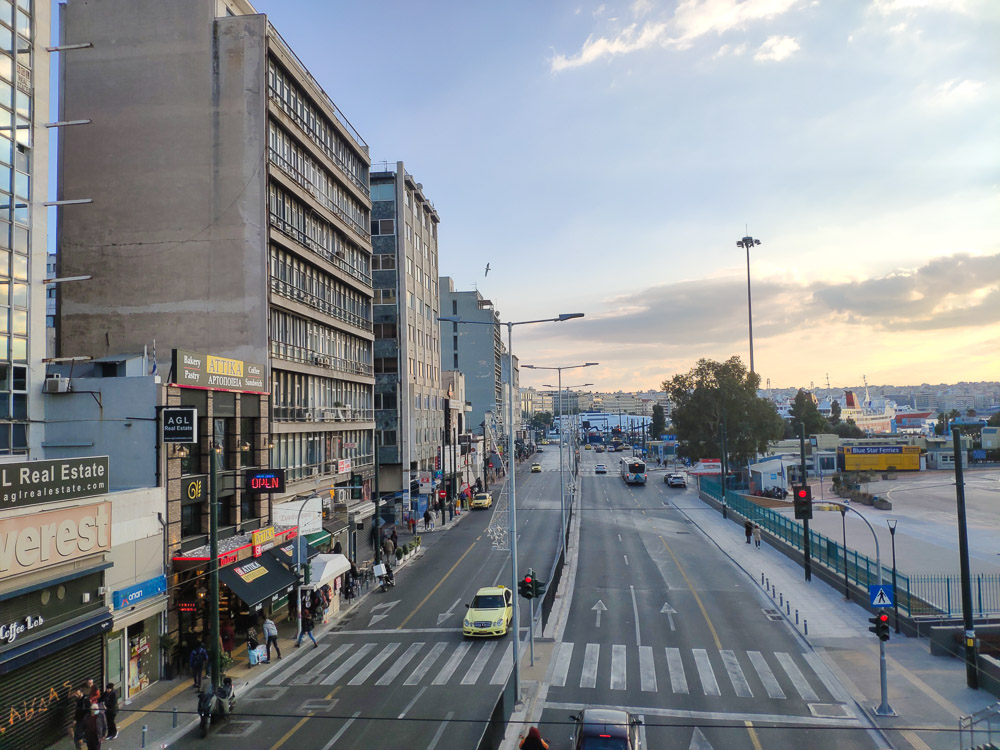
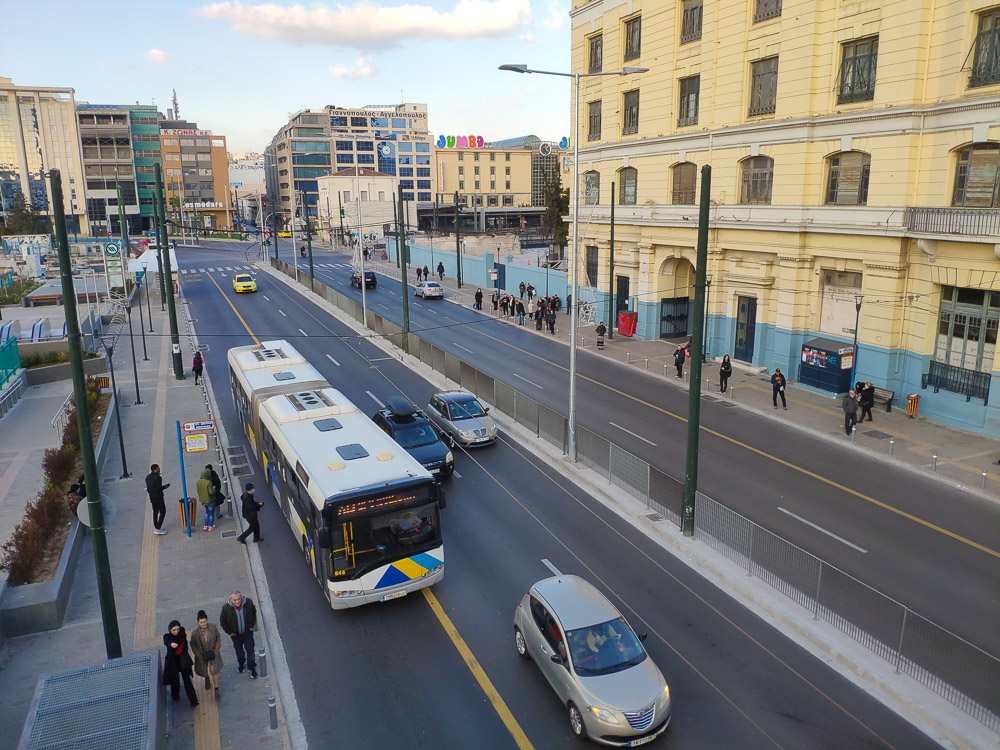
The middle of the bridge does give great views of the Piraeus Metro station, though, and you immediately appreciate how “normal” the facade looks as compared to other railway stations. Turn around towards the harbour, and you’ll see the various ferries berthed at the piers.
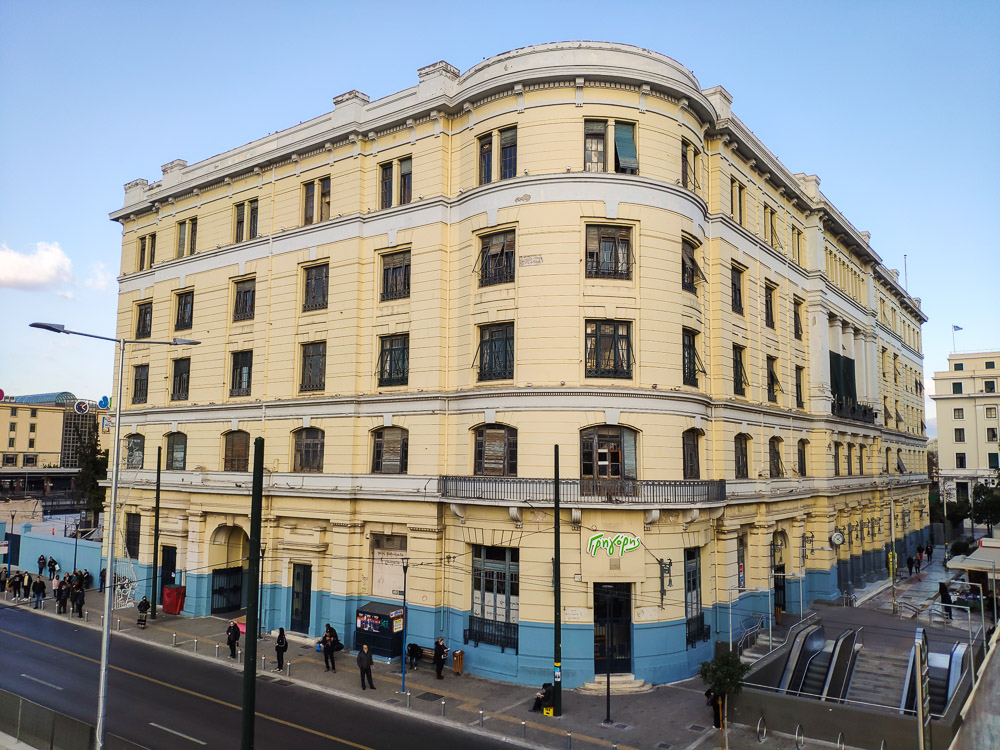

With my exploration of the Piraeus Metro station completed, I then crossed over Akti Poseidonos to begin my walk to the Piraeus railway station. The railway station is actually on the same side of the road as the Metro station, but I really was just looking for an excuse to increase my step count for the day.
Exploring the Piraeus railway station
The Piraeus railway station is a 5 minutes walk down Akti Poseidonos from the Piraeus Line 1 station. The station is located on the Greek mainline railway network and is served by the Proastiakos (Προαστιακός) commuter network. Unfortunately, my first impressions of the station building weren’t that great as it had heavy grafitti on all 3 sides of the facade.
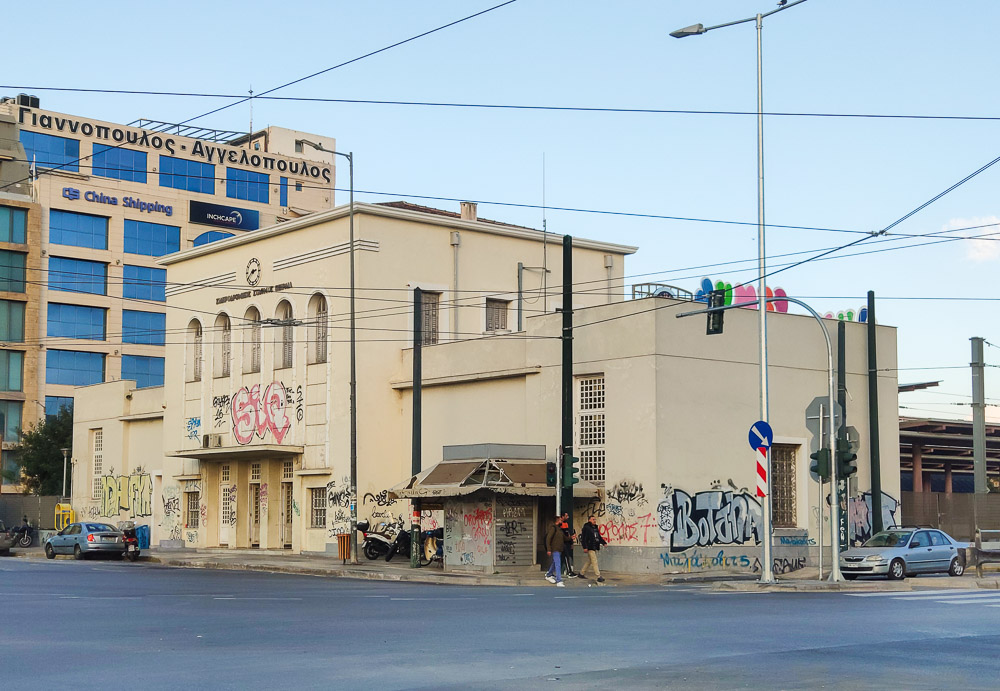
There used to be another station serving Piraeus located across the harbour on Akti Ietionia (Ακτή Ηετιώνεια). This station, also named Piraeus, was located on an un-electrified single track that used to be part of the Piraeus, Athens and Peloponnese Railways that operated from 1882 to 1962. This (old) Piraeus station soldiered on longer with services from the mainline up until 2004 when it was finally closed. The present Piraeus railway station on the other hand opened in 1928, and was then heavily renovated and reopened as part of the Athens Proastiakos network in 2007.
The layout of the Piraeus Proastiakos station is simple. Entering through the front door puts you in a small concourse serving both departing and arriving passengers. Platform access is straight ahead through ticket barriers and a ticket sales counter is located right next to the platform access door. A vintage waiting room with some seating is to the left, though I didn’t get nice pictures of it.
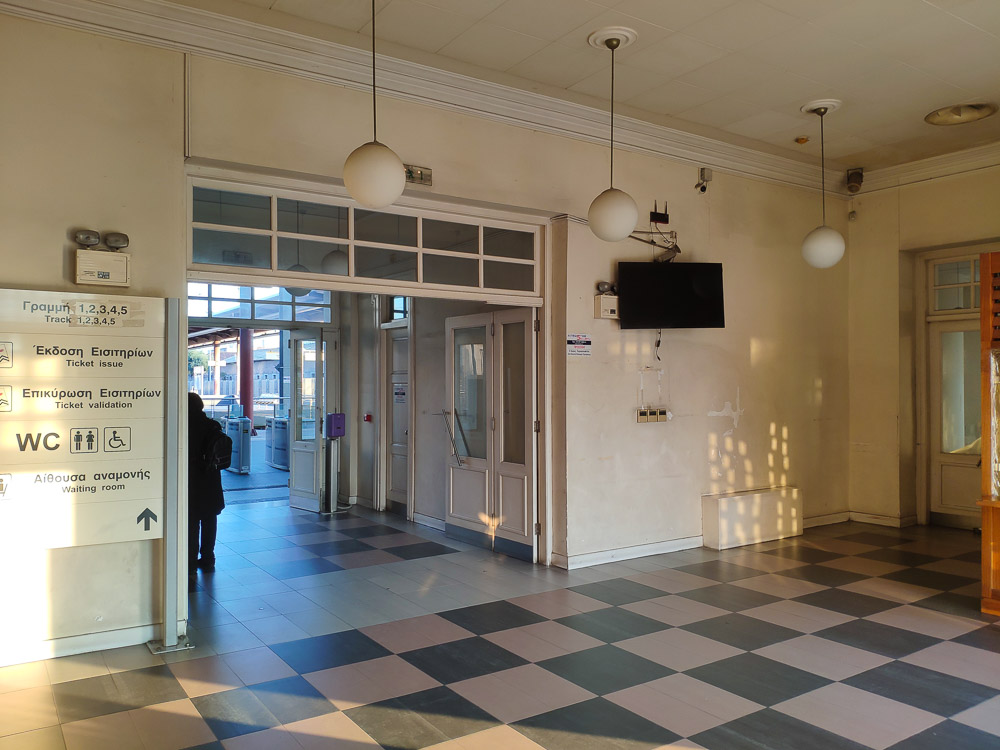
The station as a whole is actually an elegant one. The only problem is that its exterior is not well kept, and the train frequencies are not as useful as the Metro a short distance away. In fact, it was also quite a pain to dig up the timetables for the train – the Proastiakos is operated by Hellenic Trains (formerly TrainOSE), and the Athens Proastiakos timetables and system map are in PDF form located on their website under a page titled “Athens Suburban and Regional Railway“. The website does have a journey planner function, but it’s very rudimentary and not very user friendly.
I’d personally recommend sticking with the Metro within Athens unless you really need the Proastiakos to get somewhere.
Line 1 to Neo Faliro (Νέο Φάληρο)
With my exploration at Piraeus completed, I hopped back on another heavily grafittied Line 1 train to backtrack down the line by one stop and got off at Neo Faliro (also known as Faliro). This was one of the original stations that first opened in 1869, and was relocated in 1887 and completed rebuilt in 2004. The station is prominently connected to 2 major stadiums – the Karaiskakis Stadium (Στάδιο Γεώργιος Καραϊσκάκης) and the Peace & Friendship Stadium (Στάδιο Ειρήνης και Φιλίας), as well as interchanging with the Athens Tram.
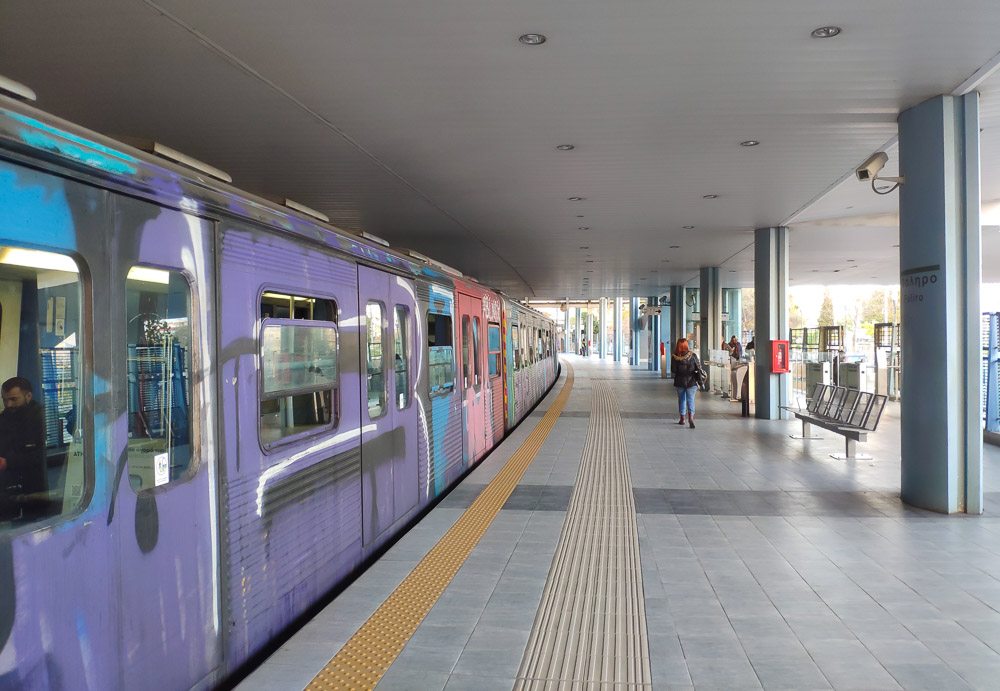
The station is connected to both stadiums via 2 large elevated pedestrian walkways – the walkway to Karaiskakis stadium connects directly to the stadium’s main entrance, whereas the walkway for the Peace & Friendship Stadium descends to an outdoor plaza with a short walk to the stadium proper. Both walkways connect directly to the station’s spacious central concourse, which is sited above the at-grade platforms and tracks.
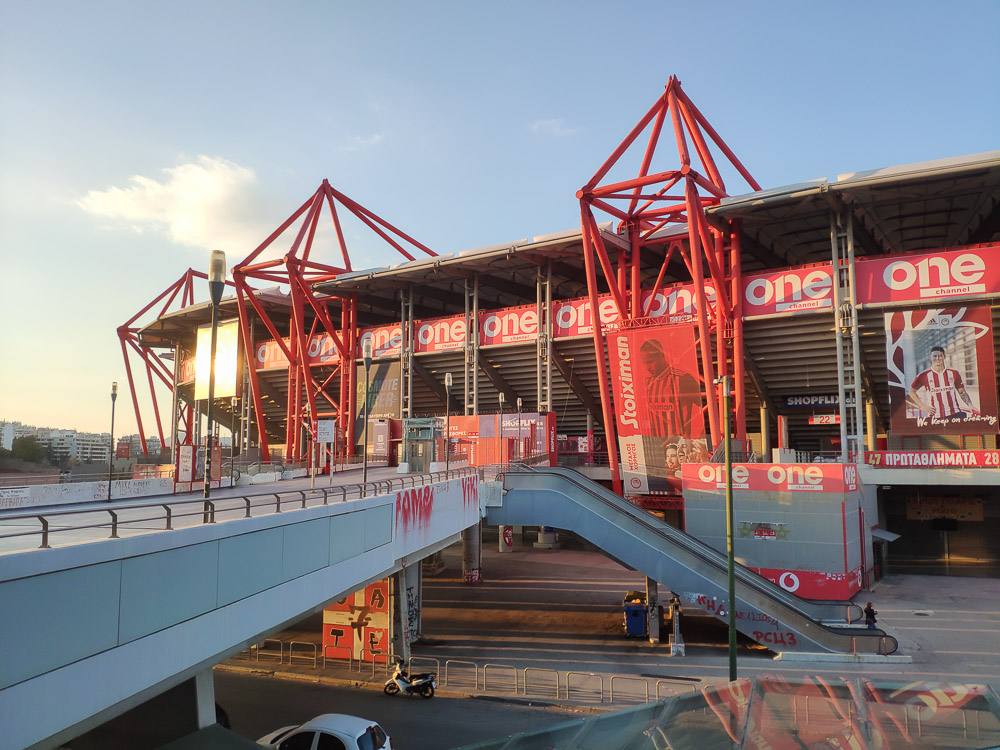
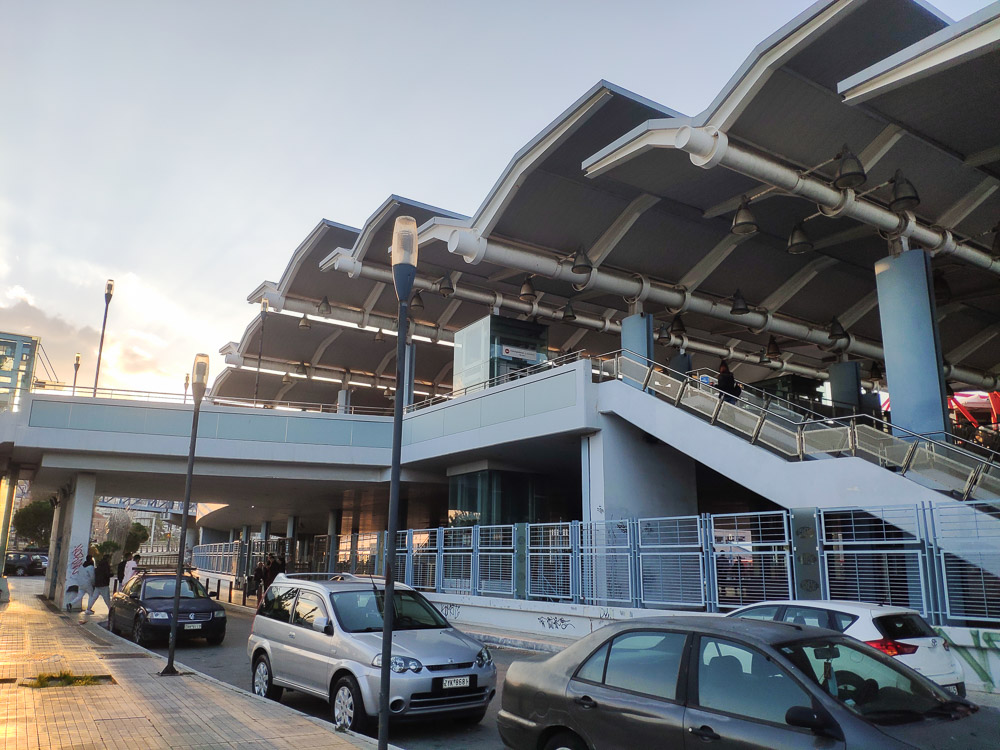
A total of 3 tracks run through the station, with there being 5 platforms – 2 island platforms and 1 side platform, with the 2 island platforms using the Spanish Solution on both sides of the platforms. The setup is meant to handle the large crowds when needed and to segregate departing and arriving passengers, but I discovered that signages aren’t equipped to handle platform allocation well. My train from Piraeus arrived on a platform that I thought served northbound trains, but a subsequent northbound train did not open its doors on the platform I was on.
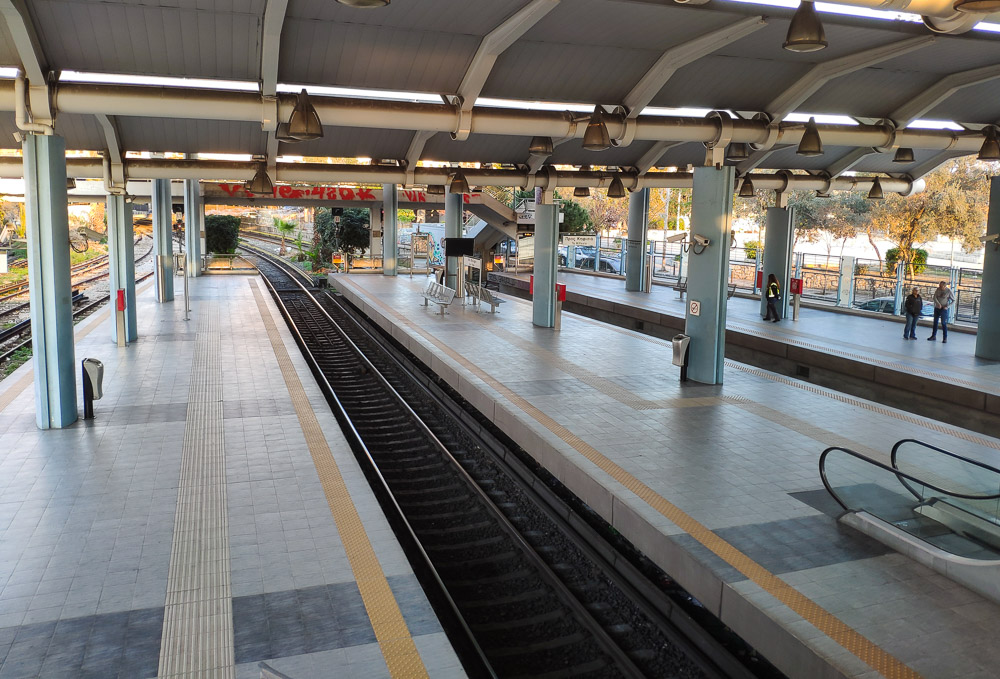
Neo Faliro wrapped up my exploration of Line 1, and I then caught a northbound train back to Athens city centre from the correct platform.
Viktoria and Monastiraki stations
2 more Line 1 stations that I wanted to feature are Monastiraki (Μοναστηράκι) and Viktoria (Βικτώρια) stations. Monastiraki opened on 17 May 1895 and was electrified in 1904. The station was then refurbished and reopened just in time for the 2004 Athens Olympic Games.
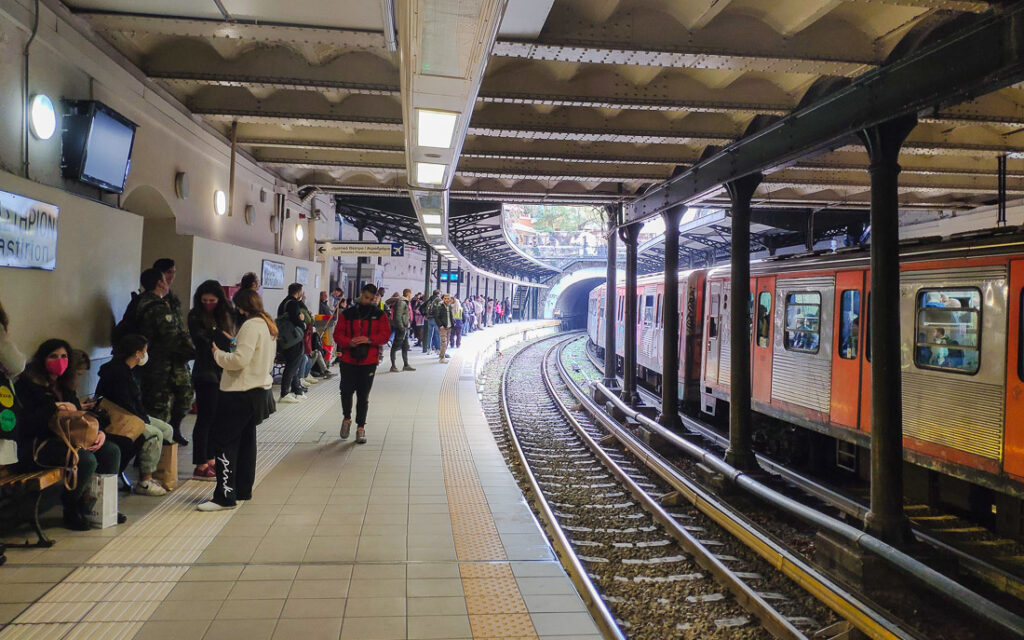
The station is of sub-surface type and also functions as the transition point between the open air segment running from Piraeus, and the underground section to Attiki station. Monastiraki is located on a curve, and results in a gap between the side platforms and trains. The station is also an important interchange station with connections to Line 3.
Fun fact: Monastiraki retains old signage featuring the Katharevousa name of “Monastirion” (Μοναστήριον).
Viktoria station is newer, having first opened on 1 March 1948 and is named after the Victoria Square next door, in turn named after Queen Victoria of the United Kingdom. It is located between Attiki and Omonia stations, and is the closest station to the National Archaeological Museum, a 5-10 minutes walk away.
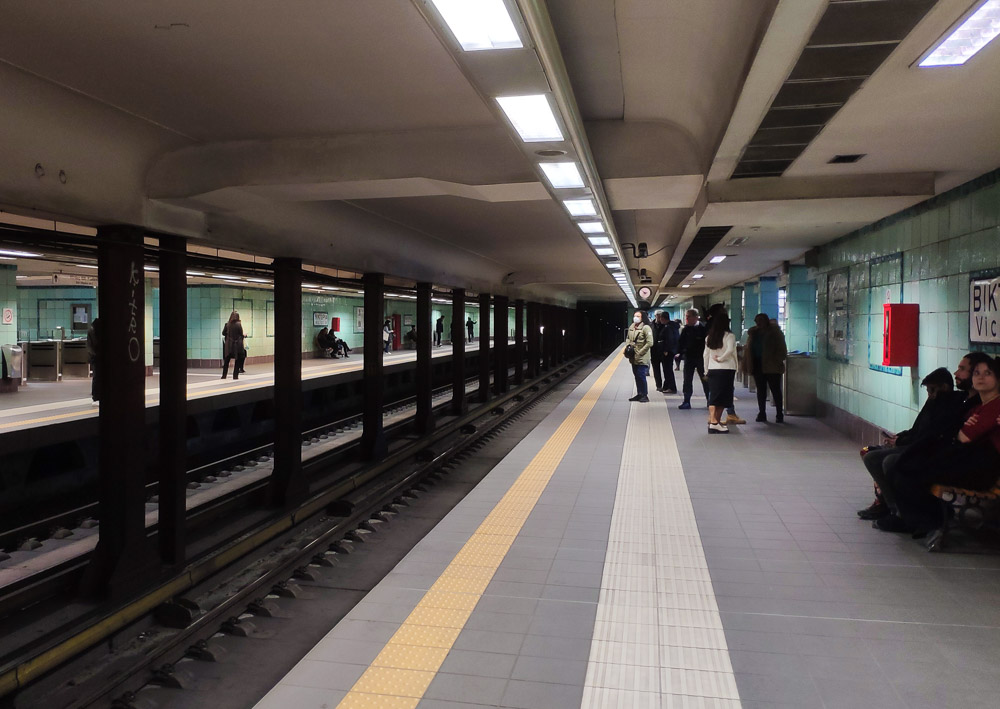
The station infrastructure blends well into the local urbanscape , with the 2 side platforms featuring their own stairs and lifts up to the Victoria Square (Πλατεία Βικτωρίας) and Cheyden Street (Οδός Χευδεν). The portal and platforms of the station are built in the Art Deco style, and resembles heavily the typical layout of Berlin U-Bahn stations – there is no central concourse and the platforms are connected directly to the street above. Changing directions require climbing up to the surface and then taking the opposite flight of stairs down.
Final Thoughts
Out of all the 3 lines of the Athens Metro, Line 1 is easily the most characterful thanks to the diverse station architecture seen along the line. As compared to its modern underground counterparts, Line 1 also grew alongside the city and is an intrinsic part of the modern cityscape in the neighborhoods it passes through.
I certainly look forward to exploring more of Line 1 the next time I’m in town.
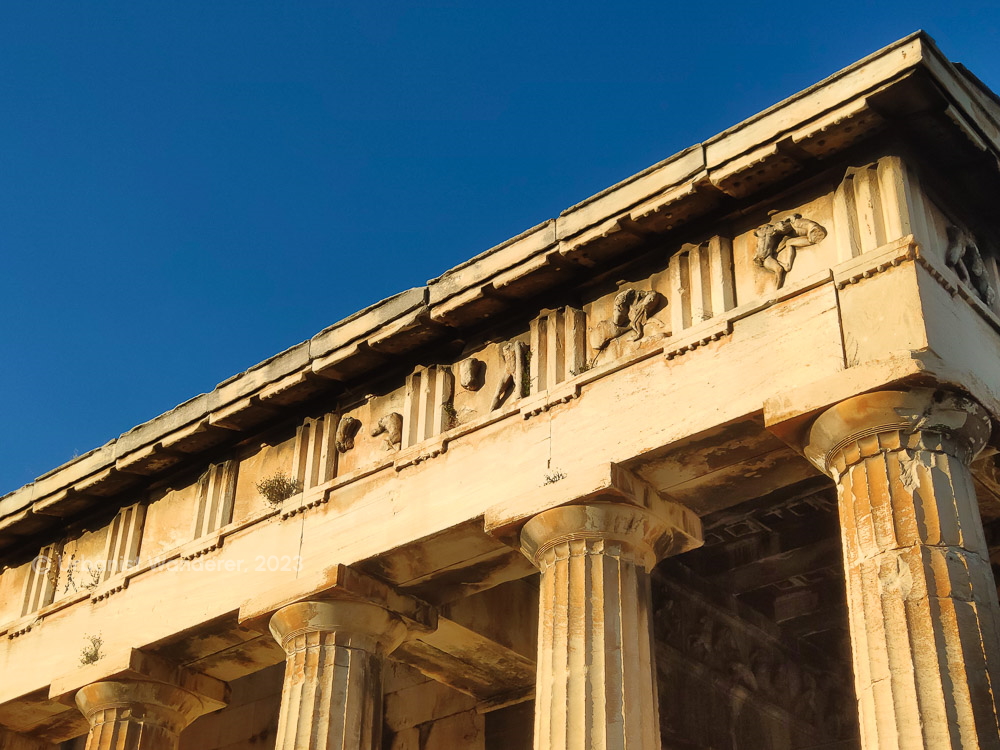
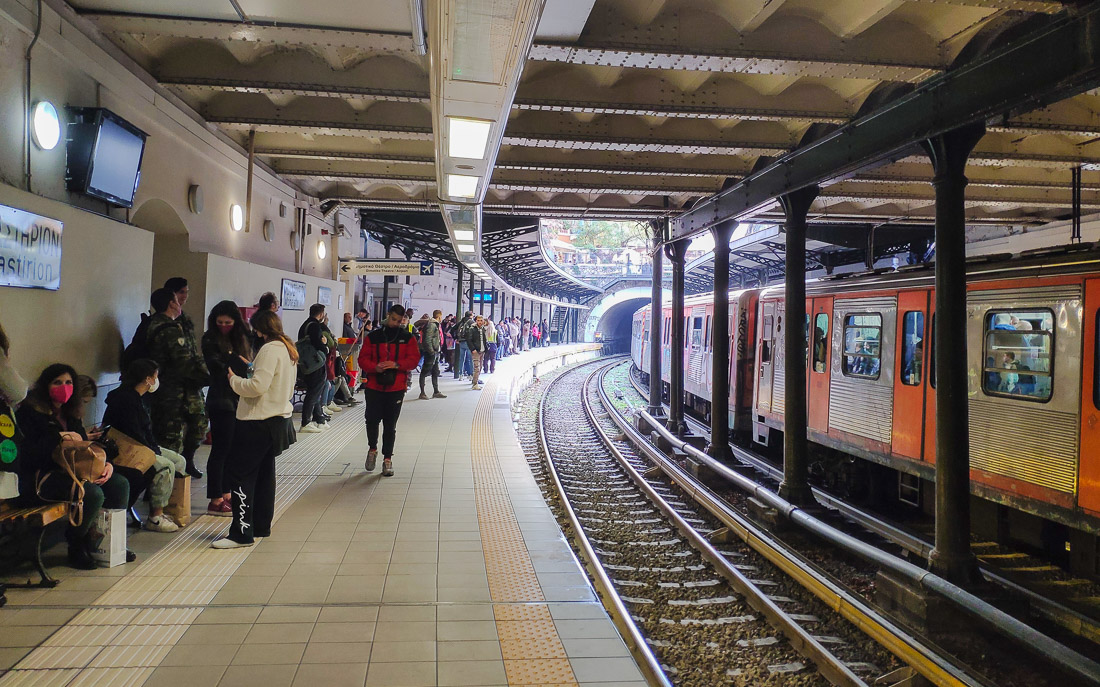
Leave a Reply